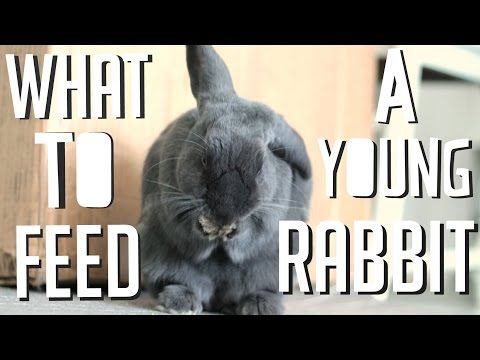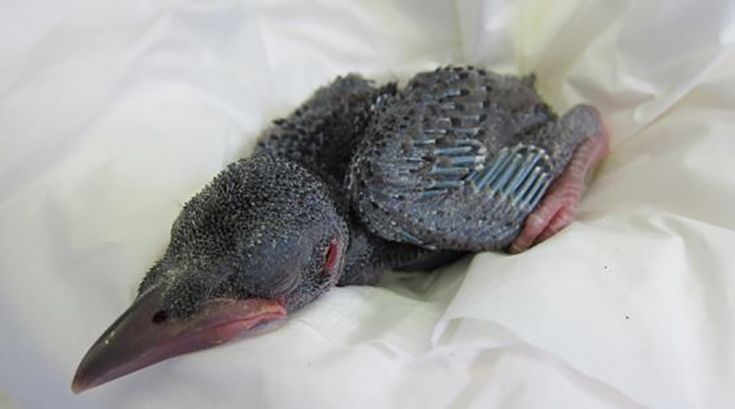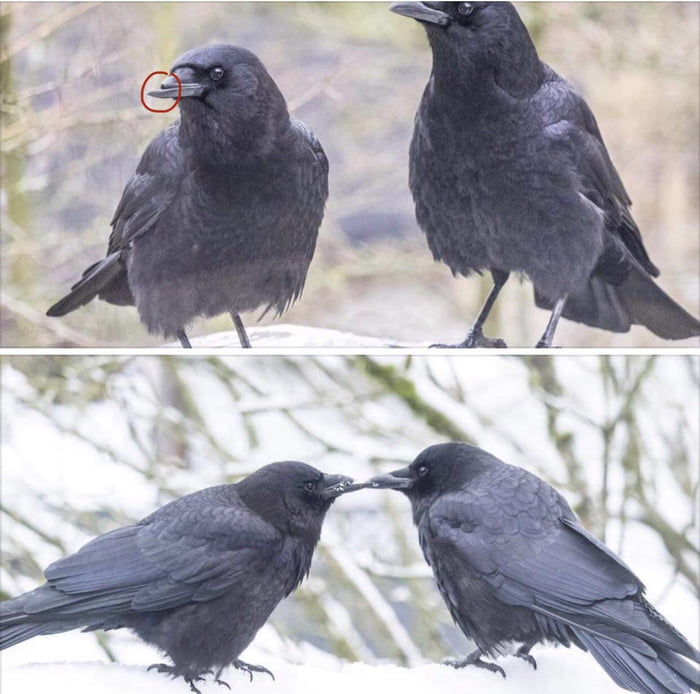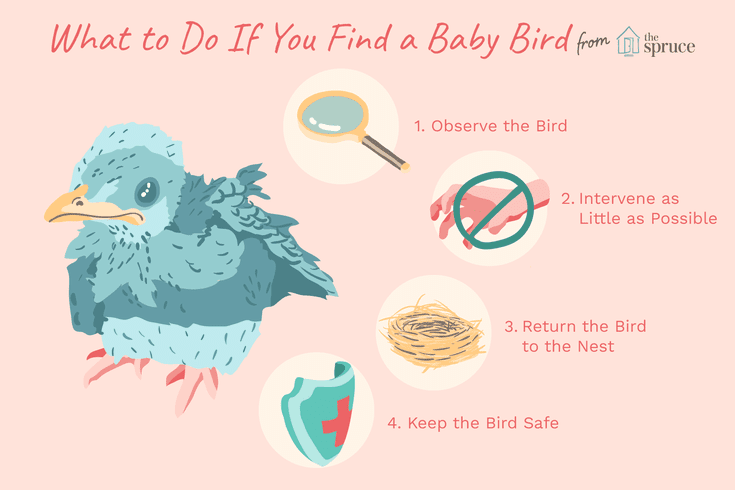What to feed a wild baby crow
How to Care for a Crow That Can't Fly
By Deborah Whistler | Updated September 26, 2017Things You'll Need
Large box
Oatmeal
Ground beef heart
Hard-boiled egg yolk
Avian vitamin supplement
Turkey starter
High-protein dog food or puppy chow
Unsalted peanuts
Corn
Sunflower seeds
Fresh fruit
Mealworms
Crickets
If you come across an orphaned or abandoned crow, you should first be sure it is indeed in need of assistance. Fledgling birds that have left the nest are often unable to fly and remain on the ground. The baby crow’s parents may be nearby and still caring for it. Observe for a while to see if the parents return. If not, or if the bird is in danger of predators, rescue it. First check to see if you can take it to a local wildlife rehabilitator. If no one is available to care for the bird, you can hand raise it for release when it’s old enough to fly or survive on its own.
Line a large box with newspaper to house the bird. Place a small bowl of water in the box for the bird to drink from.
Prepare a mixture of oatmeal, ground beef heart and hard-boiled egg yolk. You can add an avian vitamin supplement with calcium to promote bone growth.
Put a glob of the mixture on your finger and insert it into the baby crow’s gaping beak.
Stick your finger well into the bird’s throat as the mother bird would with her beak. This stimulates the swallowing reflex in the baby. Fed the bird every three to four hours in this fashion until it is 6 weeks old.
Begin offering other foods at 6 weeks. Crows are omnivores, and will eat almost anything, so are somewhat easier to raise than most baby birds. Youngsters need a diet that is at least 25 to 50 percent protein. Turkey starter is a good beginning to the diet. High-protein dog food or puppy chow is also good and usually easier to obtain. Continue feeding hard-boiled egg yolks. Other good foods are unsalted peanuts, corn, sunflower seeds, fresh fruit, and mealworms or crickets.
Keep human contact with your young crow as limited as possible and maximize its exposure to the local crows. Take it outside and let other crows investigate. It will stand a better chance of survival when released if it is accepted into a crow family.
Release the crow at about 8 weeks of age. Once it can fly, it should be released. The bird will likely stick around and beg to be fed. But by fall it will hopefully integrate with a flock.
Warnings
Keeping a crow as a pet is illegal without a permit.
Do not feed the crow too many mealworms; they are high in chitin and can cause blockages.
All birds are lactose intolerant, do not feed baby crows milk or cream of any kind.
References
- American Society of Crows and Ravens: How do I Take Care of a Pet Crow or Raven?
- Cornell Lab of Ornithology: Baby Crows
- Crows: "Orphan" Crows
Photo Credits
What Do Baby Crows Eat?
As an Amazon Associate I earn from qualifying purchases.
Crows have a long and sometimes ominous history with humans. Crows are one of the rare bird species to not only recognize people but also form friendships with them.
The lives of crows are intricately linked with ours in many ways, despite their unfortunate connection with the macabre. Our efforts are reciprocated; nevertheless, it’s only natural that our attempts would eventually lead to our bird friends being acquainted.
It is one of the most effective methods of winning over animals’ affections. It’s important to feed them. Many species may be seen as an ethical issue of whether or not you are assisting them, although it makes little sense to treat every creature equally.
Because different species have unique problems, there is no one-size-fits-all solution. Consider if the birds are in danger, whether the food is appropriate, and whether feeding them will modify or exacerbate their behavior before going any further.
What Do Baby Crows Eat?Crows are quite capable of looking after themselves. They’re intelligent enough to smash the shells open with pebbles or other hard surfaces, revealing the food inside. They can also use leaves as tools to extract insects from hiding places. Baby Crows, on the other hand, require expert care and attention after weeks or months of starvation. Even so, when crows are orphaned or during times of extreme hunger when food is unavailable, they may utilize some assistance in locating food. Crows will eat just about anything; they’re not difficult to feed.
They’re intelligent enough to smash the shells open with pebbles or other hard surfaces, revealing the food inside. They can also use leaves as tools to extract insects from hiding places. Baby Crows, on the other hand, require expert care and attention after weeks or months of starvation. Even so, when crows are orphaned or during times of extreme hunger when food is unavailable, they may utilize some assistance in locating food. Crows will eat just about anything; they’re not difficult to feed.
Crows will eat a variety of seeds, including black oil sunflower seeds and pumpkin seeds. When meat scraps and kitchen leftovers are not accessible, they will, however, consume these seeds. Simply distribute the seeds in your yard to feed them.
Nuts NutsCrows love a wide range of nuts, including peanuts, hazelnuts, walnuts, pecans, almonds, and more. You may also offer them unshelled peanuts. They consume unsalted and sugar-free peanuts.
Baby crows eat a wide range of fruits, including apples, oranges, bananas, raisins, grapes, and other things. They may also consume a variety of wild fruits including dogwood, wild cherries, and wild grapes, berries, poison oak leaves, and figs. Baby crows, however, do not like fruits as much as other foods. If you want to provide crows with different fruits, go to your local fruit store and get some. Instead of that, offer them dried nuts.
Berries BerriesCrows adore strawberries, which are one of their favorite foods. Crows enjoy eating a wide range of wild berries, including pokeberries, cranberries, juniper berries, blueberries, bayberries, and others. They tend to eat more fruit when their normal food sources are limited.
Vegetables VegetablesCrows like vegetables in addition to fruits and berries. Crows consume a variety of veggies including pumpkins, peas, beans, potatoes, peppers, and other kitchen edibles. If you want to wean your baby crows off meat and replace it with vegetables, however, switching them to veggies might be difficult.
If you want to wean your baby crows off meat and replace it with vegetables, however, switching them to veggies might be difficult.
Crows consume a variety of grains, such as corn, wheat, rice, barley, oats, millet buckwheat, sorghum, and more. When these blackbirds can’t discover anything dead or small animals to eat, they feed on grains.
Eggs EggsCrows like to eat chicken and duck eggs, unlike other birds. When the chickens and ducks aren’t around, they sneakily go into their nests to steal their eggs. If you’re willing to feed your crow’s eggs of a chicken or duck, then make sure to place them in your yard where it’s safer.
Insects An InsectCrickets, beetles, grasshoppers, locusts, spiders, snails, earthworms, mealworms, caterpillars, grubs, and a variety of other insects are included in the baby crow’s diet chart. Crows benefit our environment by eating these insects. Some people may find it difficult to purchase mealworms or crickets for crows because they do not provide any food for crows. However, they can consume the insects in your yard if you give them enough time.
However, they can consume the insects in your yard if you give them enough time.
Crows enjoy a variety of unhealthy foods, such as pasta, chips, popcorn, crackers, scallops, and so on. In the event of an emergency, you can also offer crows cookies. These blackbirds dislike salted junk food, though. So ensure that they have unsalted alternatives.
Meat MeatCrows are omnivores that feed on everything from automobile wrecks to garbage. These blackbirds, on the other hand, prefer discarded poultry and duck fat. You may also give them local butcher shops’ raw suet. Don’t give them ham or sausage, as well as salted meat and cheese. Instead, make sure the meat is unsalted and the fat is cut into tiny pieces if possible.
Dog Food Dog FoodMany people believe that baby crows can’t consume dog food. If you want to offer your bird friends some dog food, wet or dry, make sure it’s been moistened first. This is because dry dog food might cause choking among crows.
This is because dry dog food might cause choking among crows.
Baby crows need a lot of water to drink while consuming food, especially on hot days. You may have observed a crow drinking water in a modest birdbath. If you like having crows visit your yard, keep clean drinking water available for them. Baby crows will also wash in the water.
Is it Illegal To Feed Baby Crows?That all depends. It is expressly prohibited in many jurisdictions to feed or leave food out for wild animals on purpose, resulting in annoyance. Before making any decisions, check with your local legislation. However, if you’re certain, try feeding them a range of things until you discover one they prefer.
How To Feed Baby Crows? A Crow in The WildStep 1: Create A Safe Environment For ThemCrows are difficult to approach, owing in part to their intelligence and the fact that they can be sour and unsociable. Although they will not come immediately to people, they may become more accustomed to them with time. Crows will look for a quieter location where food is readily available if they sense danger or uncertainty in their surroundings.
Although they will not come immediately to people, they may become more accustomed to them with time. Crows will look for a quieter location where food is readily available if they sense danger or uncertainty in their surroundings.
Crows are typically found in open areas, therefore make your backyard more appealing to them by keeping it clean of trash and any noisemakers like cars or other noisy elements. They should be far enough away not to alarm them. To create a secure environment, eliminate any dangers.
Step 2: Offer Them Their Favourite FoodsCrows are opportunistic omnivores that will sample from a variety of food sources before settling on one they enjoy. They can eat almost anything, but make sure you provide them with good options.
Crows’ favorite foods include small pellet dog or cat food, unsalted peanuts, eggs, other seeds and nuts, vegetables and fruits, and even chicken and other meats. However, keep in mind that crows can be picky, so if they become accustomed to a specific diet, they will ask for it on a regular basis.
Being dependable is one of the most crucial factors in gaining a crow’s confidence. Feeding on a regular basis is one method to do this. Establishing a feeding timetable helps your behavior become predictable, and the crows anticipate your arrival. This rhythm helps the connection gel and trust development.
Step 4: Set Up A Bird Bath For WaterCrows require water as much as any other bird species. Provide them a location to not only cool off, but also bathe, drink, and even wash their food by adding a birdbath to your yard. When buying a birdbath, keep in mind that crows are enormous. A deeper basin will be required, as well as a stout ledge for their talons to grip, given their size.
Step 5: Experiment With The Type of Foods They Can EatIn your effort to establish a corvid friendship, you’ll need to be patient with these curious creatures. Crows are logical by nature, and it might take them some time to evaluate and interact with you. Once they feel at ease, crows will inspect almost any food you offer them.
Once they feel at ease, crows will inspect almost any food you offer them.
If no one is interested in what you’ve overlooked all day, it’s probable that they don’t like the food. You’ll need to try something different if crows are completely avoiding their favorite foods. Crows will flock to their favorite snacks, so experiment with various choices until you find out what to offer crows in your region.
Step 6: Give Them Space!Crows are smart, curious, and instinctive. Nevertheless, they are wild animals that must be treated with caution. Your objective is to admire these unusual birds from a safe distance, rather than taming or creating an abnormal dependence on them. To keep the limits secure for both us and them, keep a safe distance by observing them from a healthy standpoint.
What Are The Natural Predators of Baby Crows?Both crows and ravens are predators as well as prey. A murder of crows can overwhelm and dive-bomb hawks and eagles, making them predators. These birds can also kill songbird nestlings and even their parents. They can also break and consume other birds‘ eggshells.
These birds can also kill songbird nestlings and even their parents. They can also break and consume other birds‘ eggshells.
What are predators of crows when crows are prey? Let’s find out!
HawksHawks are one of the crow’s natural predators, and they frequently attack crows during the day. The majority of these raptors target fledgling crows, especially nestlings and fledglings. This is why so few young crows become adults.
EaglesBaby crows are vulnerable to the attacks of eagles, which is why they are sometimes called “crow killers.” Eagles frequently attack crows, especially when they’re away from their flock and on the ground. This is due to the fact that crows in flight are more powerful than eagles.
FalconsFalcons, like hawks and eagles, are the crow killers. Nonetheless, falcons are less inclined to attack crows than hawks and eagles. A fast chase between falcons and eagles is usual in order to push each other away from carrions.
Crows may be killed by great horned owls, particularly during the night when the birds roost in groups. Owls hide in evergreen trees and pounce on the crows as soon as they enter their sight. Crows’ brains are delicious to them.
RavensA crow does not beat a raven in a one-on-one fight because crows are almost half the size of ravens. Ravens are predators of crows in North America. If they can, they may burst and consume eggs from crow nests.
KingbirdsKingbirds occasionally chase and attack crows, pouncing on the birds and seating them to drive them away from kingbird nesting territory or food sources. They’ll even mob the crows to defend themselves and their young.
RaccoonsRaccoons are one of the crow-eating mammal predators. They have been observed attacking, murdering, and eating crows, particularly fledglings and nestlings. When parent crows aren’t present in their nests, raccoons are more likely to steal crow eggs.
Bobcats, feral cats, and household cats are all predators of crows in North America. The cats can retaliate against the murders of crows.
SquirrelsCrows are frequently the target of squirrel attacks, particularly young crows and their eggs. In a fight, adult crows are not swayed. Because it’s uncommon for crows to kill tiny animals, a murder of crows might consume a squirrel and eat it.
OpossumsOpossums, like squirrels, are likely to prey on fledgling crows and their unhatched eggs. Opossums eat the eggs if given the opportunity. These tiny creatures, on the other hand, maybe driven away by a large flock of crows and killed.
FoxesIf you’ve ever heard that a fox has captured and eaten a crow, it’s true. However, it is quite unusual. Foxes may prey on ground crows, their nestlings, and unhatched eggs if given the opportunity.
DogsIf a dog is near to the nests, fledglings, and eggs of crows, the birds consider the canines as predators. When crows confront dogs, they usually win. You may have seen a dog carrying a dead crow in his mouth, though.
Because crows consume carrion and trash, many individuals think they should not be eaten. Crows, on the other hand, are edible. You can eat them without getting sick. They have a flavor that’s comparable to that of a goose, duck, or other dark meat bird.
The flavor of crows is affected by how well they are cared for. If properly prepared, they will taste good; if not, they won’t. Some people say that because crows eat almost anything, they can’t be eaten, but this isn’t true.
Amazon and the Amazon logo are trademarks of Amazon.com, Inc, or its affiliates.
What can you feed a crow, what you can not feed a crow, what to feed a crow
Headings: Diseases and treatment of birds, Popular Somewhere God sent a piece of cheese to a crow
What can you feed a crow? How to properly feed a crow, how to properly maintain a crow, how to feed a crow
With all due respect to Ivan Andreevich Krylov, it is worth noting that his fable made a significant contribution to ornithology, but, unfortunately, not a positive one. After all, people now, as they see a crow, strive to treat it with cheese, which a hungry bird enjoys eating. So can crows be fed cheese? And how to properly feed a bird that, by chance, got into trouble and ended up under the care of people. The main principle - do no harm, here we are talking about the same. Based on our practice, feeding birds with foods high in fat causes serious pathologies of internal organs - hepatitis, fatty liver, pancreatitis, coronary artery disease, cholecystitis, cancer, immunodeficiencies, arthritis, arthrosis. Getting this set of chronic diseases is difficult to restore the health of the bird again. And what can we say about the flight, where you need lightness and a healthy heart, not to mention the joints. nine0005
After all, people now, as they see a crow, strive to treat it with cheese, which a hungry bird enjoys eating. So can crows be fed cheese? And how to properly feed a bird that, by chance, got into trouble and ended up under the care of people. The main principle - do no harm, here we are talking about the same. Based on our practice, feeding birds with foods high in fat causes serious pathologies of internal organs - hepatitis, fatty liver, pancreatitis, coronary artery disease, cholecystitis, cancer, immunodeficiencies, arthritis, arthrosis. Getting this set of chronic diseases is difficult to restore the health of the bird again. And what can we say about the flight, where you need lightness and a healthy heart, not to mention the joints. nine0005
Let's figure out how to properly feed the corvids. We remind you that the corvidae or raven family includes not only the gray crow, but also the black crow, jackdaw, rook, common raven, magpie, kuksha, common and blue jay.
The basis of the diet of these birds is lean meat - beef, turkey, chicken.
Offal can be given to corvids:
chicken hearts
stomachs
heads
necks (feeding chicken heads and necks refers to crows, crows and rooks, sometimes jackdaws and jays also love such products very much).
· The diet of corvids also includes fat-free cottage cheese
Boiled river fish (it is undesirable to feed raw fish because of the risk of infecting the bird with helminthiases, for the same reason it is impossible to feed earthworms to corvids, as this can cause the development of a serious disease in birds - syngamosis). nine0005
The crow's diet contains more meat than other corvids. The question of what to feed a crow can be answered as follows: it is best if thawed mice and day-old chickens prevail in the crow's diet, and not just meat and offal.
As a mandatory top dressing, corvids need insects in the diet.
These are insects:
mealworm
crickets
Locust
Ant eggs.
What to pamper, than to treat a crow?
This is what the bird feeds on in nature, and our task is to bring the conditions of keeping and feeding the bird closer to its natural ones. Therefore, treat your corvid pet not only with meat, but also with insects, berries, fruits, and vegetables. Berries, vegetables and fruits can be given any, you just need to be sure that they are not treated with insecticides.
As a supplement, corvids can be fed boiled eggs, but in small quantities. You can also give boiled buckwheat, rice, millet, corn grits. But, of course, the main percentage in the diet is still occupied by meat. Of the treats, birds can be offered dryers, white bread crackers, pumpkin seeds, sunflower seeds, gammarus. As a mineral supplement for birds, egg shells can be ground into powder and placed in a separate feeder. nine0005
What can't you feed a crow? What should not be given to birds?
Now let's designate what exactly cannot be given to birds. The list of prohibited foods includes: salty, fatty, sweet, fried foods, sausages, milk, bread, canned food, alcohol, crackers, chips, juices, peanuts (here we mean the entire list of what is harmful to humans), citrus fruits (there is little information about this, someone feeds birds citrus fruits for a long time and this does not cause any pathologies, and in some birds the intake of citrus fruits causes severe allergic reactions). nine0005
The list of prohibited foods includes: salty, fatty, sweet, fried foods, sausages, milk, bread, canned food, alcohol, crackers, chips, juices, peanuts (here we mean the entire list of what is harmful to humans), citrus fruits (there is little information about this, someone feeds birds citrus fruits for a long time and this does not cause any pathologies, and in some birds the intake of citrus fruits causes severe allergic reactions). nine0005
What vitamins and supplements do crows need?
Now about vitamins. If the bird is provided with a complete diet, which includes insects and mineral supplements, then the need for vitamins is reduced to a minimum. But still, we recommend fortification twice a year - in early spring and late autumn, that is, in courses of 2 weeks. From well-proven vitamins, German Beaphar Mauser Tropfen, Lebensvitamine can be used, from domestic ones - Chiktonik. A complete, well-balanced diet is the basis of the health of any living being. nine0005
Veterinary ornithologist Elena Pavlova
Posted by petitabeille | Date: 04/12/2016 - 08:43
What to feed a crow at home and what not to give a bird
Crows are infrequent guests in people's homes, but some still keep them as pets. It is not uncommon for a person to find a weakened chick on the street and take it home to go out and then release it into the wild. For those who find themselves in this situation, it is extremely important to find out what the crows are fed at home. nine0005
It is not uncommon for a person to find a weakened chick on the street and take it home to go out and then release it into the wild. For those who find themselves in this situation, it is extremely important to find out what the crows are fed at home. nine0005
It turns out that it is not so easy to make a complete diet for this bird.
What to feed a crow
Birds from the corvid family are omnivores. Their diet is quite varied, especially in the summer, when fruits and berries ripen. Ravens do not disdain any source of food.
In the wild, their menu includes:
- rodents;
- fish;
- amphibians - lizards, frogs;
- bird eggs; 9009one
- chicks;
- cones of pine, spruce;
- fruits;
- berries;
- insects.
Attention! Among all members of the Crow family, crows are most prone to cannibalism. It is they who in most cases attack bird nests and eat eggs and newly hatched chicks.

In winter, they often have to eat carrion. In the cold season, birds eat everything that can be found on the street. These are vegetable peelings, leftovers from the human table, dry seeds and berries, buds of trees and shrubs. nine0005
Despite the fact that crows are omnivores, it is not so easy to make a complete diet for them at home. These birds often suffer from a lack of vitamins and amino acids. Improper feeding can lead to the development of rickets, loss of feathers and other unpleasant consequences.
The nutrition of adult birds and chicks has a number of differences. Those who want to get a crow need to remember the main rule of feeding - the diet of a feathered pet should be varied.
Feeding adult birds
The diet of the crow is based on fresh meat. At home, a feathered pet needs to be fed daily:
- lean beef;
- rabbit meat;
- chickens;
- quails;
- feeding mice;
- by-products (liver, kidneys, chicken stomachs).

Raw meat should be fed to the domestic crow. It is advisable not to grind it, but to allow the bird to independently separate the pieces. This will favorably affect the work of the muscles that are involved during meals. Carcasses of chickens and quails are given with bones. It is better to feed the domestic crow with a bird that is grown in the village on a natural diet. nine0005
Chickens from stores are often stuffed with hormonal growth stimulants. Such food is unlikely to benefit a feathered pet.
If rats and mice are introduced into the diet of crows, these must be food animals. The carcass is given as a whole. The bird will easily tear it apart thanks to its strong and massive beak. You can not deprive the pet of the opportunity to work hard to get their own food.
Twice a week it is advisable to feed your feathered pet with fresh river fish. Small ones are given whole. It is better to pre-gut a large one and remove the bones. You can feed the crow at home and sea fish. Because it contains thiaminase, an enzyme that breaks down thiamine, the product should be cooked for 5 minutes. nine0005
Because it contains thiaminase, an enzyme that breaks down thiamine, the product should be cooked for 5 minutes. nine0005
Important! Although crows often eat carrion in the wild, at home, the bird should only be fed fresh food.
Crows are fed eggs 2-3 times a week. Such food is rich in animal protein and calcium. Eggs are given fresh. Birds love to eat them right out of the shell. Seafood is also useful to feed domestic crows. They enjoy eating mussels, crustaceans, sea urchins and crabs. They should not be cleaned, the bird will do it on its own.
nine0007 The owner of the crow must take care to make the process of obtaining food interesting. To do this, eggs and food insects can be wrapped in paper or placed in a small box. Before eating something tasty, the bird will have to work to extract the contents.In addition to meat, fish and offal, it is useful to feed an adult crow with sour-milk products:
- medium-fat cottage cheese;
- ryazhenka;
- kefir;
- classic sugar-free yoghurt.
 nine0091
nine0091
You should also feed your feathered pet with porridge. Any cereals in boiled or steamed form without the addition of salt are suitable - buckwheat, rice, including brown, barley, oatmeal, millet.
Domestic crow needs vitamins. Their source is vegetables, fruits and berries. Birds are happy to eat:
- carrots;
- potatoes;
- radish;
- cauliflower;
- broccoli;
- marrow; nine0090 pumpkin;
- melon;
- watermelon;
- banana;
- apple;
- pear;
- peach;
- grapes;
- persimmon;
- strawberries;
- currants;
- plum;
- dried fruits.
Nuts can be added to the diet of the domestic crow. They contain vegetable protein, oils and vitamins, which will improve the appearance of plumage. A feathered pet can be fed with pine and walnuts, hazelnuts, almonds. The main thing is to give them in small quantities and not too often. nine0005
nine0005
Ravens are also fed dry commercial cat food. Their share in the diet should not exceed 5%. Often such food is used as a treat or reward. In the warm season, you can treat the crow with plantain seeds, dandelion leaves and nettles. In winter, grain sprouts will become an additional source of vitamins.
It is very important to feed the house crow with insects - crickets, locusts, flour worms. You can buy them at the pet store. Such food contains many minerals and chitin, which is necessary for the formation of pellets. Their absence leads to disturbances in the work of internal organs. nine0005
Feeding chicks
Crow chicks up to 8 weeks of age should be fed an easily digestible diet. It is best to prepare mixers that consist of several ingredients. They include:
- steamed ground cereals;
- greens or sprouts of grain;
- baby meat puree or boiled minced meat;
- grated vegetables - carrots, apples are given from a week old.

Crow chicks are fed with small lumps of the mixture. Food should not be cold or hot. It is carefully laid deep into the open beak, which helps to provoke a swallowing reflex. nine0005
Easy to feed baby food to little chicks. Any meat, vegetable and fruit canned food without salt and sugar will do. Crows are also given dairy-free cereals for children - buckwheat, corn, rice. They are easy to dissolve in warm water and mix with the right ingredients.
In addition, hard-boiled chicken or quail eggs and low-fat cottage cheese can be introduced into the diet of crow chicks. In the mixers you need to add meat and bone and fish meal, as well as pharmaceutical yeast. The proportion of such additives in the diet should not exceed 5% of the daily food intake. nine0005
Recipe for a mash for feeding a healthy crow chick:
- steamed oatmeal 30%;
- cottage cheese - 10%;
- boiled minced poultry - 40%;
- seedlings of grain - 10%;
- grated carrot or apple - 10%;
- egg - 5%;
- pharmacy yeast - 3%.

If the chick is weak and unable to feed on its own, it is fed through a tube from the system, one end of which is put on a syringe. Food is crushed to a mushy state and heated to a temperature of 37-38 degrees. nine0005
Crow chicks that are 8 weeks old (fledglings) can be fed the same food as adult birds. Only food should be offered in a crushed form.
Essential dietary supplements
If the crow receives a varied diet that includes insects and greens, the need for additional sources of vitamins and minerals is reduced. However, not every owner of a bird is able to properly organize its diet. In this regard, ornithologists recommend feeding domestic crows with vitamins and minerals at least 2 times a year - in spring and autumn. nine0005
In order for the pet to be healthy, its plumage shone with a luxurious brilliance, the following supplements should be included in the diet:
- sepia - it is added to the mixers;
- dried kelp;
- seaweed collection - may also include kelp.

In pet stores, you can buy special preparations for birds from both foreign and domestic manufacturers, for example, Chiktonik vitamins.
Drinking water
nine0007 In addition to feeding, care must be taken that the crow has constant access to drinking water. She must be clean. Tap water contains many harmful impurities. These are chlorine and salts of heavy metals. It is good if a fine filter is installed at home. If it is not there, it is better to give the crow purchased water.Certain requirements apply to its temperature. Water should be heated to 23-25 degrees.
Prohibited foods
Although crows in nature eat almost everything they find, this does not mean that a pet can be fed anything. Some products cannot be given to these birds, and their list is quite impressive. This is:
- salty, fatty, sweet and fried foods;
- sausage, sausages;
- whole milk;
- bakery products, including crackers;
- canned food;
- chips;
- from nuts prohibited peanuts;
- citrus fruits;
- sweets - sweets, cookies.












